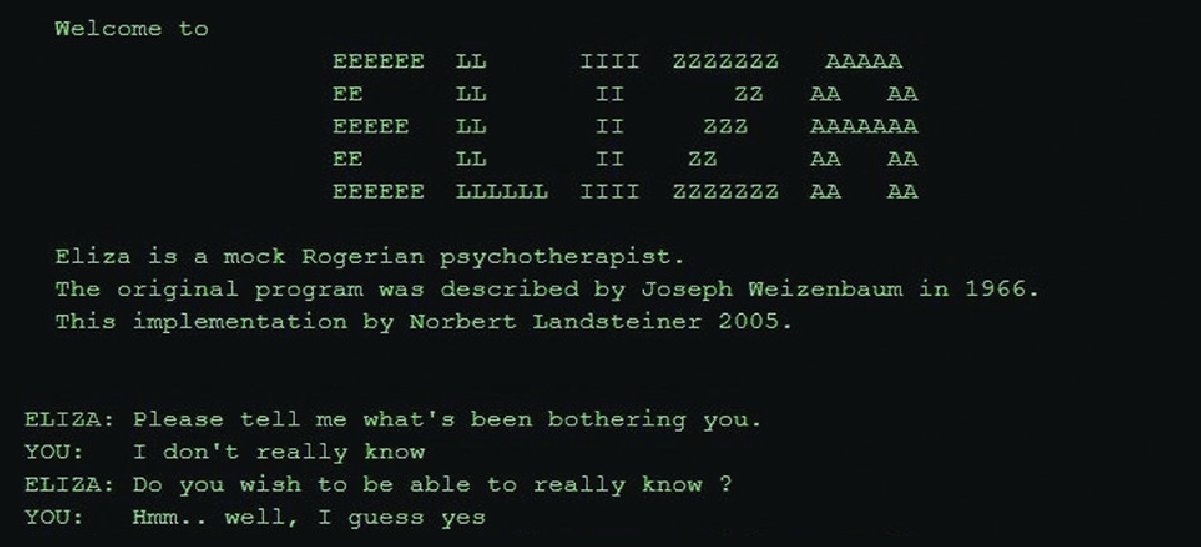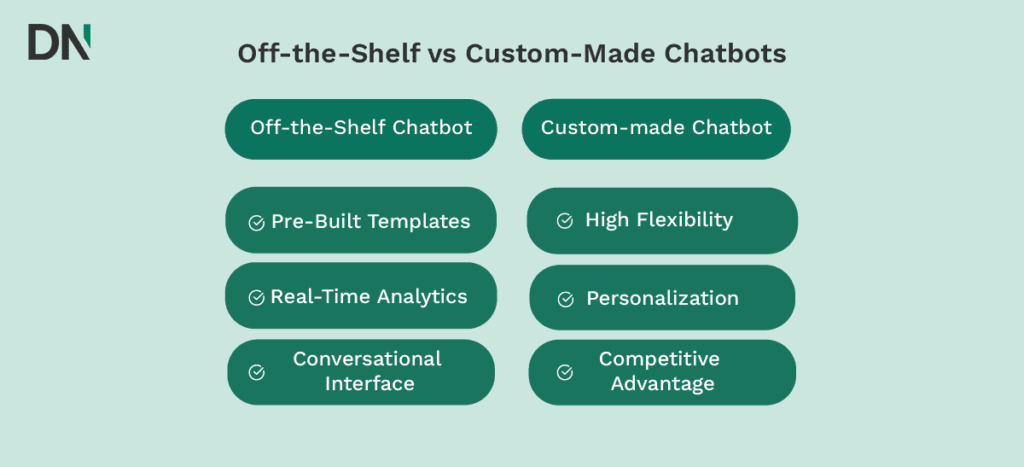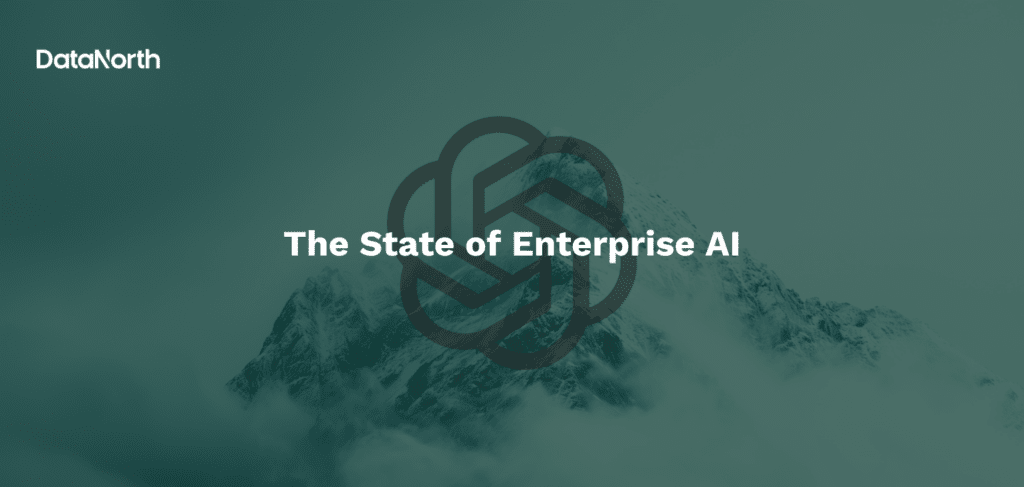In the realm of artificial intelligence, chatbots have become a crucial tool for businesses to enhance customer engagement and streamline operations. When it comes to implementing a chatbot, companies are faced with two primary options: off-the-shelf solutions and custom-made chatbots. Each option has its pros and cons, which are essential to understand before making a decision.
In this blog, we will explore what these options are, their features, and their pros and cons. To make everything more clear, we will also delve into case studies and concrete industry examples of how these chatbots are implemented. Finally, we will examine criteria according to which you can determine which AI solution fits best with your organization’s needs.
Understanding Chatbots
To begin with, before explaining off-the-shelf solutions and custom-made chatbots, it is important to understand what a chatbot is, its business-related functions and how it evolved to its current state.
What is a Chatbot?
Chatbots, also known as conversational agents or virtual assistants, are computer programs designed to simulate human conversation. They are AI-driven conversational agents that interact with users, providing information, assistance, and support through text or voice interfaces. Chatbots are used to reproduce powerful interactions with users, aid business processes, gain information from large groups, and serve as personal assistants, among other functions.
Chatbot in Business
When it comes to organizations, chatbots have been prevalent in a wide variety of functions, with the most prominent being: customer service, marketing, etc. So let’s explore how chatbots are enhancing organizational processes within business functions:
- Customer service: Chatbots have become an essential tool for businesses, enhancing customer experience and streamlining operations. They provide instant support, handle a large volume of inquiries, offer personalized assistance, and reduce response times, leading to improved customer satisfaction. Chatbots can also gather valuable customer feedback and insights, enabling businesses to gain a deeper understanding of their customers’ preferences, pain points, and behaviors. Take a look at the use case by DataNorth about a customer service chatbot and its benefits towards the organization.
- Marketing: In marketing, chatbots are used to engage with customers, provide personalized experiences, and foster strong brand relationships. They can automate repetitive tasks such as providing product recommendations. By automating these tasks, businesses can empower their employees to focus on higher-level, strategic tasks, enhancing their productivity and efficiency.
- Other business functions: Chatbots are used in various industries, including retail, travel, healthcare, finance, and education. They can handle tasks such as booking travel, managing investments, and processing bill payments. Chatbots can also be used for proactive functions like sending reminders, offering promotions, and initiating conversations to enhance customer engagement.
It is evident that chatbots have shifted business operations and processes, by automating mundane tasks and providing more personalized experiences. But how did it all start?
History and evolution
The first chatbot ELIZA was developed by MIT professor Joseph Weizenbaum in the 1960s. Since then, chatbots have evolved significantly, incorporating advancements in natural language processing (NLP), machine learning, and artificial intelligence (AI). The introduction of messaging apps and social media platforms has further accelerated the development and adoption of chatbots. Today, chatbots are used in various industries and for different use cases, providing a competitive advantage to businesses that adopt them.

Now that we have an understanding of chatbots’ origin, let’s dive into the two most popular categories of chatbots: Off-the-shelf vs. Custom made.
Off-the-shelf chatbots
Off-the-shelf chatbots are pre-built software applications designed to cater to a wide range of general applications. These solutions are characterized by their quick deployment, lower initial cost, and ongoing support from vendors. They are ideal for startups and companies looking for a cost-effective way to integrate AI into their operations.
Examples include customer service chatbots such as Intercom, CRM tools with AI features like Salesforce, and ChatGPT, a generative AI solution that has revolutionized the technological world.
Since we made clear what an off-the-shelf solution is, let’s dive into its features and capabilities.
Off-the-shelf chatbot features & capabilities
Off-the-shelf chatbot solutions come with a range of features and capabilities. Indicatively, the most prominent features are:
- Conversational interface: Off-the-shelf chatbots offer a conversational interface that allows users to interact with the chatbot using natural language.
- Pre-built templates: These solutions come with pre-built templates that can be easily customized to fit a business’s branding and messaging.
- Integration with existing systems: Off-the-shelf chatbots can integrate with existing systems such as CRM, databases, and marketing tools.
- Real-time analytics: These solutions provide real-time analytics, enabling businesses to monitor chatbot conversations and make data-driven decisions.
- Multilingual support: Many off-the-shelf chatbots offer multilingual support, allowing businesses to engage with customers in their native language.
Except for the features we mentioned, off-the-shelf chatbots usually encompass the following capabilities:
- Automated issue resolution: Off-the-shelf chatbots can automate the resolution of common customer inquiries and issues.
- Personalized recommendations: These chatbots can analyze user data and behavior to offer personalized product or service recommendations.
- Omnichannel support: Off-the-shelf chatbots can provide a consistent experience across all platforms, including web, mobile, social media, and messaging apps.
- Seamless integration: They can integrate with various platforms and tools, ensuring a seamless experience for both customers and businesses.
- Scalability: Off-the-shelf chatbots are designed to scale with growing businesses, accommodating increased user volumes and evolving functionalities.
This is a brief overview of what off-the-shelf solutions can offer, but why should someone consider acquiring an off-the-shelf chatbot? Let’s explore some pros and cons that come with such a solution.
Advantages off-the-shelf chatbots
- Cost-effective: Lower initial investment compared to custom chatbot solutions.
- Quick deployment: Can be implemented rapidly, allowing companies to benefit from AI technologies without lengthy development times.
- Proven reliability and support: Often come with vendor support, updates, and a community of users, ensuring reliability and assistance when needed.
Despite the advantages, off-the-shelf solutions come with certain drawbacks.
Disadvantages off-the-shelf chatbots
The most popular disadvantages of off-the-shelf solutions are: limited flexibility and commonality. These aspects found in widely available AI technologies may hinder a company’s ability to fully customize and gain a competitive edge. In detail:
- Limited flexibility: May not perfectly align with a company’s specific needs, offering limited customization options.
- Potential for common solutions reducing competitive edge: Using widely available AI solutions may not provide a significant competitive advantage, as competitors can access the same technologies.
In summary, while off-the-shelf AI solutions offer convenience and cost savings, their limited flexibility and widespread availability can restrict customization and diminish competitive advantages for companies.
After shedding light on off-the-shelf chatbots, let’s dive into custom-made AI chatbot solutions.
Custom-made chatbots
Custom-made chatbots are digital solutions specifically developed to align with an organization’s unique requirements and objectives, mostly powered by AI technology. These models are distinguished by their high flexibility, scalability, and ability to integrate with various platforms.
Many brands in different industries have resorted to custom-made AI chatbots that enhance their operations and efficiency. Indicatively, Domino’s Pizza deployed a custom-made chatbot to streamline their ordering process. The chatbot helps customers place orders, track their delivery, and provides real-time updates.
H&M also deployed a custom-made chatbot to enhance their customer service, provide personalized product recommendations, and offer order tracking updates. Lately, another famous example is Lego’s Ralph. Lego deployed a custom-made chatbot named Ralph to enhance their e-commerce platform. Ralph is a conversational AI chatbot that helps users navigate their website, answers FAQs, and provides personalized product recommendations.
In summary, custom-made chatbots provide significant advantages through their tailored approach, improving customer interactions and operational efficiency across various industries. As we explore their features and capabilities further, it becomes clear why many businesses are turning to these AI solutions.
Custom-made chatbot features & capabilities
Custom-made chatbots are designed to cater to specific business needs and requirements. Here are some common features of custom-made chatbots:
- Personalization: Custom AI chatbots can personalize user experiences by using user data and preferences.
- Machine learning (ML): Custom AI chatbots use ML to learn from user interactions and improve their responses over time.
- Multilingual support: Custom AI chatbots can support multiple languages, enabling businesses to cater to a global audience.
- Emotional intelligence: Custom AI chatbots can recognize and respond to user emotions, ensuring empathetic responses.
- Scalability & flexibility: Custom AI chatbots can handle high volumes of conversations without affecting performance. They can be easily updated and modified to adapt to changing business needs.
- Customization in UI & workflows: Custom AI chatbots can have a customizable user interface to match business branding. They can also have customizable workflows to accommodate specific business processes.
These features are crucial for creating a seamless and effective user experience. As for capabilities, the most prevalent ones among custom AI chatbots are:
- Integration Capabilities
- API integration: Custom AI chatbots can integrate with all the APIs necessary to access data and perform actions.
- Database integration: They can integrate with company databases to retrieve and update information.
- Third-party integration: Custom AI chatbots can integrate with any third-party services like CRM, ERP, and help desk software.
- Conversational capabilities
- Natural language processing (NLP): Custom AI chatbots use NLP to understand and process human language, enabling them to respond to user queries accurately.
- Intent recognition: They can recognize user intent and respond accordingly.
- Contextual understanding: Custom AI chatbots can understand context and maintain it throughout conversations, providing a more human-like experience.
Overall, custom-made chatbots offer a wide range of advanced features and capabilities tailored to meet specific business needs. Next, we will explore the pros and cons of implementing custom AI chatbots.
Advantages of custom-made chatbots
Custom-made chatbots offer significant benefits:
- High flexibility: Can be tailored to meet specific business needs, offering unlimited customization options.
- Scalability: Can handle high volumes of requests and integrate with various platforms, making them ideal for large enterprises.
- Competitive advantage: Can provide a significant competitive edge by offering unique capabilities unavailable to competitors.
Besides the benefits mentioned above, they also come with certain drawbacks.
Disadvantages of custom-made chatbots
- Higher initial cost: Requires a higher initial investment compared to off-the-shelf solutions.
- Longer development time: Takes longer to develop and implement, requiring significant resources and expertise.
It is evident that, while custom-made chatbots can be a powerful asset for businesses, offering tailored solutions and unique capabilities, they require a higher initial investment and longer development time compared to off-the-shelf alternatives.
After presenting the pros and cons of each option, let’s get into more detail about the costs involved with each chatbot solution.

Comparative cost analysis Off-the-shelf vs. Custom-made chatbots
When considering implementing a chatbot, it’s crucial to understand the various costs involved. These costs can be broadly categorized into initial investment, maintenance and updates, and hidden costs. Here’s a detailed breakdown:
Initial investment
The initial investment for chatbots can vary significantly depending on whether you choose an off-the-shelf or custom-made solution. Here are some key points to consider:
- Off-the-Shelf Chatbots: As off-the-shelf chatbots are pre-built solutions, they can be quickly deployed. The upfront cost for off-the-shelf chatbots can range from $0 to $10,000 or more, depending on the complexity and features of the chatbot. Basic chatbots may be free or low-cost, while more advanced versions with additional functionalities can be more expensive.
- Custom-Made Chatbots: Custom-made chatbots typically require a higher initial investment as they are tailored to meet specific business needs. They usually range from $10,000 to $500,000 or more, depending on the complexity, features, and the level of customization required. The higher initial investment covers the design, development, and integration of the chatbot.
Maintenance and updates
Ongoing costs associated with chatbots include maintenance and updates. Here are some key points to consider:
- Off-the-Shelf Chatbots: Ongoing costs for off-the-shelf chatbots can range from $500 to $2,500 per month, depending on the level of support and updates required.
- Custom-Made Chatbots: Ongoing costs for custom-made chatbots can range from $1,000 to $5,000 or more per month, depending on the complexity and features of the chatbot.
Hidden costs
Potential hidden costs associated with chatbots include:
- Training Costs: Training staff to operate, monitor, and update the chatbot, as well as providing user support, can add to the overall cost.
- Integration Costs: Integrating the chatbot with existing systems can be significant, especially if the chatbot requires custom APIs or connectors.
- Scaling Costs: The ability to scale the chatbot to handle more users or to expand its functionality over time can affect initial and ongoing costs.
- Security and Compliance: Ensuring that the chatbot is secure and complies with relevant regulations (e.g., GDPR, HIPAA) can add to the cost, especially if handling sensitive data or operating in heavily regulated industries.
In conclusion, while off-the-shelf chatbots offer a lower initial investment, they may have higher ongoing costs and hidden costs associated with integration, training, and scaling. Custom-made chatbots, on the other hand, require a higher initial investment but offer more flexibility and customization options, which can lead to long-term cost savings and improved performance.
Decision-making guide
When deciding between off-the-shelf and custom-made chatbots, it’s essential to understand the key differences in their features and capabilities. Here are the primary distinctions:
Key differences
- Integration capabilities
- Off-the-shelf chatbots
- Limited integration: These chatbots often come with basic integration capabilities, which may be sufficient for standard applications but can be restrictive for more complex requirements.
- Pre-defined integrations: They typically offer integrations with popular platforms, but customization beyond these predefined options can be challenging.
- Off-the-shelf chatbots
- Custom chatbots
- Extensive integration: Custom chatbots can integrate deeply with various internal and third-party systems, such as CRM, ERP, and other business applications. This allows for seamless data flow and more personalized customer interactions.
- Tailored Solutions: They can be designed to meet specific business needs, ensuring that all necessary integrations are implemented effectively.
- Natural language processing (NLP)
- Off-the-shelf chatbots:
- Basic NLP: While many off-the-shelf solutions offer NLP capabilities, they may not be as advanced or customizable as those in custom solutions. This can limit their effectiveness in understanding complex queries.
- Limited customization: The ability to train and improve NLP models is often restricted, making it harder to adapt to specific business needs and customer interactions.
- Custom chatbots
- Advanced NLP capabilities: Custom chatbots can leverage sophisticated NLP algorithms to better understand and respond to user inquiries. This results in more accurate and contextually relevant interactions.
- Continuous improvement: They can be trained and fine-tuned over time to improve their understanding of specific industry jargon and customer intents, providing a more natural conversational experience.
- Maintenance
- Off-the-shelf chatbots:
- Minimal maintenance: These solutions typically require less maintenance, as updates and bug fixes are managed by the vendor. This can reduce the burden on internal IT teams.
- Vendor support: Off-the-shelf chatbots come with vendor support, which can be beneficial for troubleshooting and ensuring the chatbot remains up-to-date with the latest features.
- Off-the-shelf chatbots:
- Custom chatbots:
- Routine maintenance: Custom chatbots require regular maintenance to ensure they continue to function optimally. This includes updates, bug fixes, and the addition of new features based on evolving business needs.
- Dedicated support: Businesses often need dedicated technical support to manage and maintain custom chatbots, which can be more resource-intensive but ensures the chatbot remains aligned with business objectives.
- Hidden costs
- Off-the-shelf chatbots:
- Subscription fees: Ongoing subscription fees can add up over time.
- Limited customization: The need for additional features or integrations not supported by the vendor can lead to extra costs.
- Vendor lock-in: Dependence on the vendor for updates and support can result in higher long-term costs if the vendor’s pricing model changes.
- Off-the-shelf chatbots:
- Custom chatbots:
- Training costs: Training staff to operate and update the chatbot can add to the overall cost.
- Integration costs: Custom integrations can be significant, especially if the chatbot requires bespoke APIs or connectors.
- Scaling costs: Scaling the chatbot to handle increased user volumes or expanded functionality can incur additional costs.
- Security and compliance: Ensuring that the chatbot meets specific security and compliance requirements can add to the cost, especially in regulated industries.
Overall, when selecting between off-the-shelf and custom chatbots, organizations must weigh the trade-offs between simplicity and flexibility. Off-the-shelf chatbots offer ease of use, minimal maintenance, and vendor support but may fall short in complex integrations and advanced NLP capabilities.
On the other hand, custom chatbots provide extensive integration options, tailored solutions, and sophisticated NLP features, but they come with higher maintenance needs and potential hidden costs. Ultimately, the choice depends on the specific requirements and resources of the business, ensuring the chatbot solution aligns with their strategic goals and operational demands.
Now that you can distinguish the key differences between off-the-shelf and custom chatbots, let’s take a look at assessment criteria you can use to decide which option fits best with your organization’s needs.
Assessment criteria
When deciding between off-the-shelf and custom-made chatbots, businesses need to carefully assess their specific needs, budget, and long-term goals. Here are the key factors to consider and questions to ask during the decision-making process:
1. Budget
- Off-the-shelf chatbots: Generally have a lower initial investment, ranging from $0 to $10,000 or more.
- Custom-made chatbots: Require a higher initial investment, typically ranging from $10,000 to $500,000 or more.
2. Timeline
- Off-the-shelf chatbots: Can be deployed quickly, often within days or weeks.
- Custom-made chatbots: Take longer to develop and deploy, often requiring several months.
3. Specific needs
- Off-the-shelf chatbots: Suitable for businesses with standard requirements and limited customization needs.
- Custom-made chatbots: Ideal for businesses with unique, complex requirements that need extensive customization and integration with existing systems.
4. Scalability
- Off-the-shelf chatbots: May have limitations in scalability and flexibility.
- Custom-made chatbots: Designed to scale and adapt to growing business needs.
5. Integration
- Off-the-shelf chatbots: Limited integration capabilities with existing systems.
- Custom-made chatbots: Can be fully integrated with various internal and third-party systems.
6. Maintenance and updates
- Off-the-shelf chatbots: Ongoing costs range from $500 to $2,500 per month.
- Custom-made chatbots: Ongoing costs range from $1,000 to $5,000 or more per month.
7. Data security and compliance
- Off-the-shelf chatbots: May have basic security features.
- Custom-made chatbots: Can be tailored to meet specific security and compliance requirements.
In summary, choosing between off-the-shelf and custom-made chatbots requires a careful evaluation of your business’s specific needs, budget, and long-term objectives.
Off-the-shelf chatbots offer lower initial costs, quick deployment, and minimal maintenance, making them suitable for businesses with standard requirements and limited customization needs. Conversely, custom-made chatbots demand a higher investment and longer development time but provide extensive customization, scalability, and robust integration capabilities, ideal for businesses with unique and complex requirements.
Assessing factors such as budget, timeline, scalability, integration, maintenance, and data security will help determine the best chatbot solution to support your business’s strategic goals.
To further guide your decision-making process, consider the some questions to ask presented in the following section.
Frequently asked questions
Here are some questions to get you started:
1. What are our specific business needs and goals?
Determine the primary objectives for implementing a chatbot (e.g., customer support, sales, lead generation).
2. What is our budget for initial investment and ongoing maintenance?
Assess the financial resources available for both the initial setup and long-term maintenance.
3. How quickly do we need the chatbot to be deployed?
Consider the urgency of the deployment and whether a quick solution is necessary.
4. What level of customization do we require?
Identify the extent to which the chatbot needs to be customized to meet specific business processes and customer interactions.
5. What are our integration requirements?
Determine the systems and platforms the chatbot needs to integrate with (e.g., CRM, ERP, help desk software).
6. What are our scalability needs?
Consider future growth and whether the chatbot needs to scale with the business.
7. What are our data security and compliance requirements?
Identify any specific security measures and regulatory compliance needs (e.g., GDPR, HIPAA).
8. What is our long-term strategy for chatbot use?
Consider how the chatbot will evolve and adapt to changing business needs over time.
By addressing these questions, you can make a more informed decision that aligns with your business needs and long-term strategy.
Examples
Let’s take a look at some examples of chatbot implementation based on different industry and organization needs:
Example 1: Small E-commerce business
Needs: Quick deployment, basic customer support, and order tracking.
Decision: Off-the-shelf chatbot due to lower initial cost and quick setup.
Example 2: Large financial institution
Needs: High security, integration with multiple systems, personalized financial advice.
Decision: Custom-made chatbot to meet specific security requirements and complex integration needs.
Example 3: Healthcare provider
Needs: Appointment scheduling, patient data management, compliance with HIPAA.
Decision: Custom-made chatbot to ensure data security and compliance with healthcare regulations.
By carefully considering these assessment criteria and asking the right questions, businesses can make an informed decision on whether to choose an off-the-shelf or custom-made chatbot solution.
Case studies and suitability
The choice between off-the-shelf and custom-made chatbots depends on various factors, including budget, timeline, and the importance of customization for the project. Businesses should consider their specific needs and weigh the pros and cons of each option before making a decision.
Type of chatbot for small businesses and startups
Off-the-shelf chatbots are ideal for small businesses and startups looking for a quick and cost-effective way to integrate AI into their operations.
Type of chatbot for large enterprises
Custom-made chatbots are better suited for large enterprises with unique needs and requirements, offering high flexibility, scalability, and competitive advantage.
By understanding the differences between off-the-shelf and custom-made chatbots, businesses can make informed decisions and choose the solution that best fits their needs, ultimately enhancing customer engagement and driving business success.
Following, you can find some case studies to get inspired and take an inside look on how some companies have implemented chatbots in their processes.
Case studies: Off-the-shelf vs. Custom-made chatbots
Starting off with off-the-shelf chatbots, we have “Freddy” by HelloFresh.
HelloFresh Freddy
HelloFresh is a German meal-kit company based in Berlin. It is the leading meal kit provider in the United States, with operations in Australia, Canada, New Zealand, and other European countries. The company delivers pre-portioned goods and recipes to customers’ doorsteps, making home cooking accessible and simple.
HelloFresh developed Freddy, the Messenger bot, to improve customer service and engagement. Freddy, originally launched in 2017, was created to manage incoming messages on Facebook Messenger, reducing response times and increasing customer satisfaction.
- Benefits:
- Reduced response time: The chatbot reduced response time by 76%, providing instant answers to customer queries.
- Increased engagement: Incoming messages increased by 47%, indicating higher customer engagement.
- Challenges:
- Limited conversational capabilities: The chatbot’s conversational abilities were not highly advanced, limiting its effectiveness in handling complex queries.
- Lessons learned:
- Efficiency gains: Off-the-shelf chatbots can significantly improve response times and customer engagement.
- Scope limitations: These chatbots may struggle with more complex interactions, highlighting the importance of understanding their limitations.
For a custom-made solution, let’s take a look at Kofax Knowledge Base Bot.
Kofax Knowledge Base Bot
Kofax, currently named Tungsten Automation, is a leading provider of intelligent automation software for digital workflow transformation. The company helps organizations streamline their operations by automating repetitive tasks and improving customer engagement.
Kofax implemented a custom AI chatbot, known as the Kofax Support KoBot, powered by Cognigy.AI. The chatbot was fully integrated into their knowledge base to provide self-service resources and enhance customer support.
- Benefits:
- High success rate: The chatbot achieved an 80% success rate in resolving customer queries without needing to forward them to a human agent.
- Reduced support tickets: The high intent recognition of the chatbot resulted in fewer support tickets and improved customer satisfaction.
- Challenges:
- Development time: Developing a custom chatbot with advanced NLP capabilities took considerable time and resources.
- Lessons learned:
- Advanced NLP capabilities: Custom chatbots with advanced NLP can significantly reduce the need for human intervention and improve customer satisfaction.
- Long-term investment: While the development process may be lengthy, the long-term benefits in terms of efficiency and customer satisfaction are substantial.
In conclusion, the case studies of HelloFresh’s Freddy and Kofax Knowledge Base Bot illustrate the distinct advantages and challenges of off-the-shelf and custom-made chatbots. HelloFresh’s Freddy demonstrated significant efficiency gains and increased customer engagement but faced limitations in handling complex queries.
Conversely, Kofax’s custom chatbot showcased advanced NLP capabilities, achieving high success rates and reducing support tickets, though it required a significant investment of time and resources.
These examples highlight that while off-the-shelf chatbots offer quick wins in response time and engagement, custom-made solutions provide deeper, long-term benefits in efficiency and customer satisfaction.
Which chatbot suits your business?
Are you interested in finding out more about chatbots, their capabilities and which type of chatbot fits the goals of your organization? Get in touch with DataNorth and explore your options with our AI Experts.
Our experts are able to guide you through possibilities of chatbots and other solutions using the power of AI. With our AI Consulting we offer you a fixed amount of hours to get expert advice and help. We also offer a special AI Assessment that helps organizations find high-impact AI opportunities (like the implementation of chatbots) within different departments.
Don’t wait and get started exploring the possibilities of Chatbots and AI!






